Introduction
The Florida Everglades, renowned for its incredible biodiversity, is a hidden gem that every traveler should explore. Recently, Erin and I took a week-long trip to the beautiful Florida Keys. We were determined to visit Shark Valley, an integral part of the Everglades National Park. This UNESCO World Heritage site in South Florida is a biosphere reserve and an internationally significant wetland. It is a must-see for anyone in the vicinity of Miami or the Florida Keys.
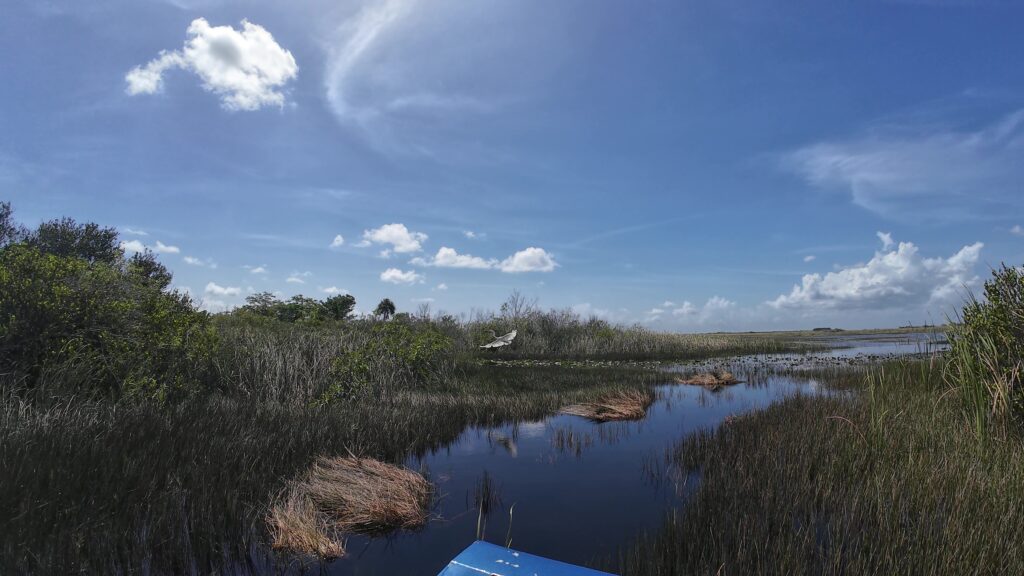
Journey to Shark Valley
After spending several days in Key West, we decided to venture to Key Largo, located on the eastern end of the Keys, to experience the Everglades.
The drive to Shark Valley Visitor Center, situated within the Everglades National Park, took about an hour and forty minutes. The trip is no more than an hour from downtown Miami. The Tram Tour and Airboat ride is only about 3 – 4 hours. Combining these activities makes this such an easy day trip from Miami, Fort Lauderdale, and up the Florida Keys to Marathon and Key Largo areas.
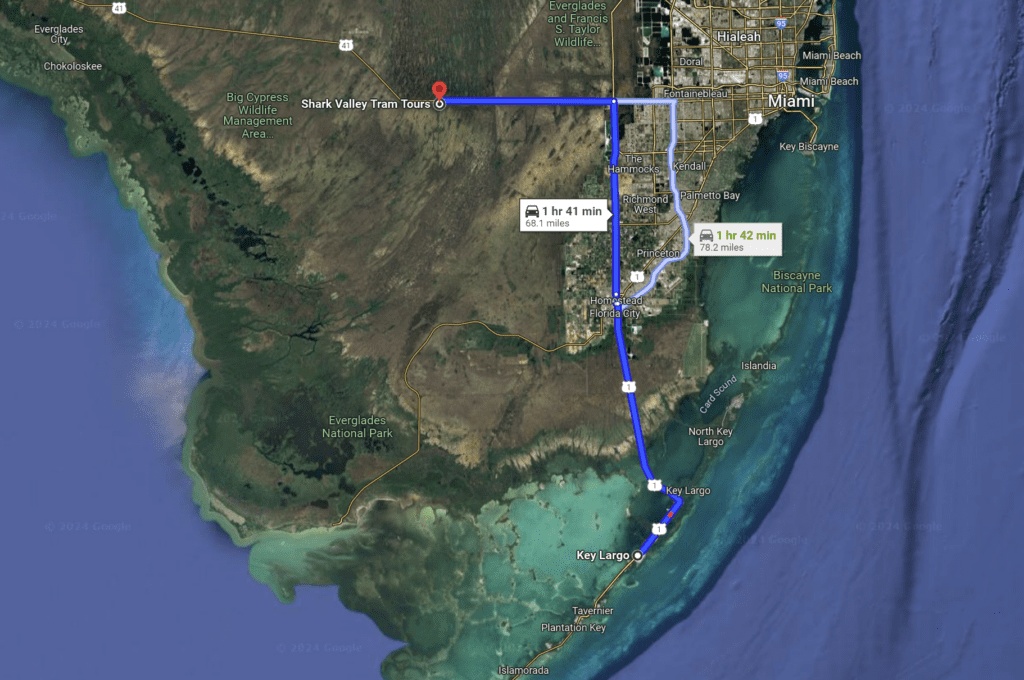
The Shark Valley Entrance is right off of Tamiami Trail. The anticipation of exploring this unique ecosystem is undeniable.
Visitor Center
Drive to the Shark Valley Visitor Center and grab a parking spot in the parking lot. Take a look around at the Visitor Center as it has some great educational exhibits about the Florida Everglades.
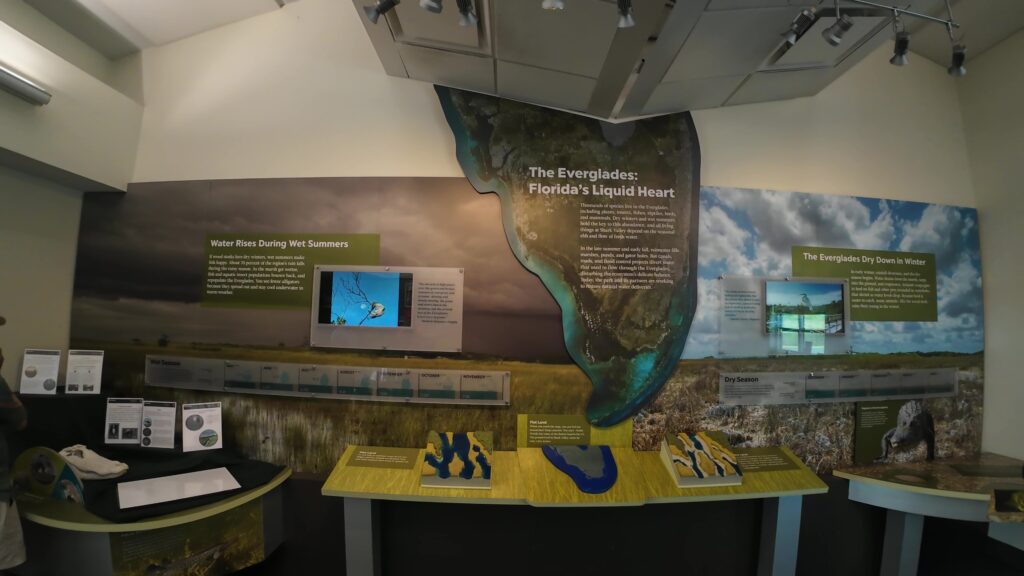
Take with you plenty of water! Fill up your water bottles or purchase some water at the Visitor Center before the tour starts. Around the back of the Shark Valley Visitor’s Center is where the Shark Valley Tram Tour originates.
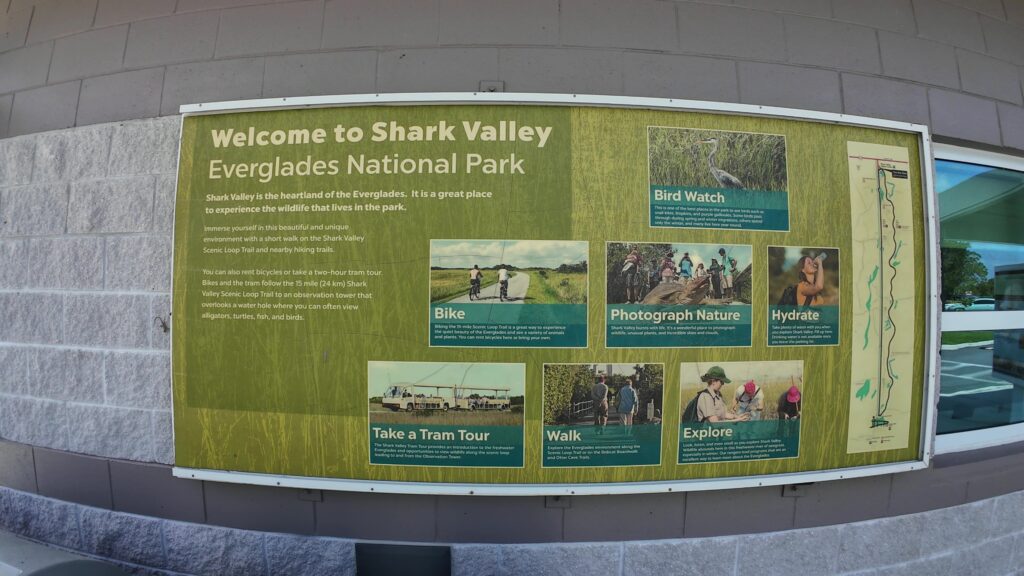
The Tram Tour Experience
Our adventure began at the Shark Valley Tram, operated by Shark Valley Tram Tours, an authorized concessionaire of the National Park Service. With a National Parks park ranger accompanying us, the two-hour tram tour quickly transformed into a highly educational tour of the Everglades, shedding light on the diverse ecosystems found in Shark Valley.
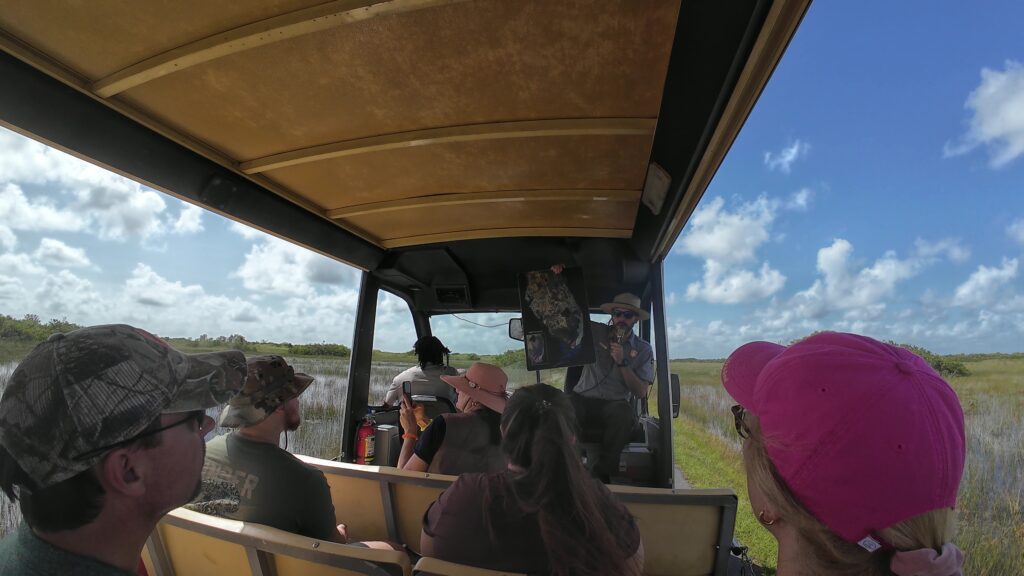
The Tram Tour
The tram journey covered a 15-mile loop trail along a winding asphalt path and lasted approximately 2 hours. The trams are open-air trams. The depth of the water in this part of the Everglades generally remains no more than two feet, with a constant flow from east to west, facilitated by culverts installed along the roads. They often refer to it as the river of grass.
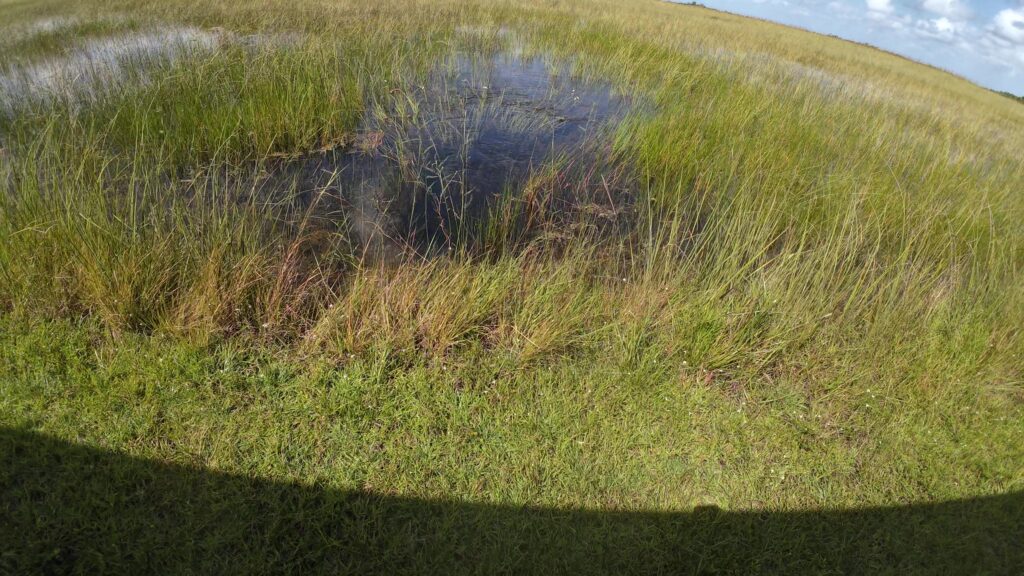
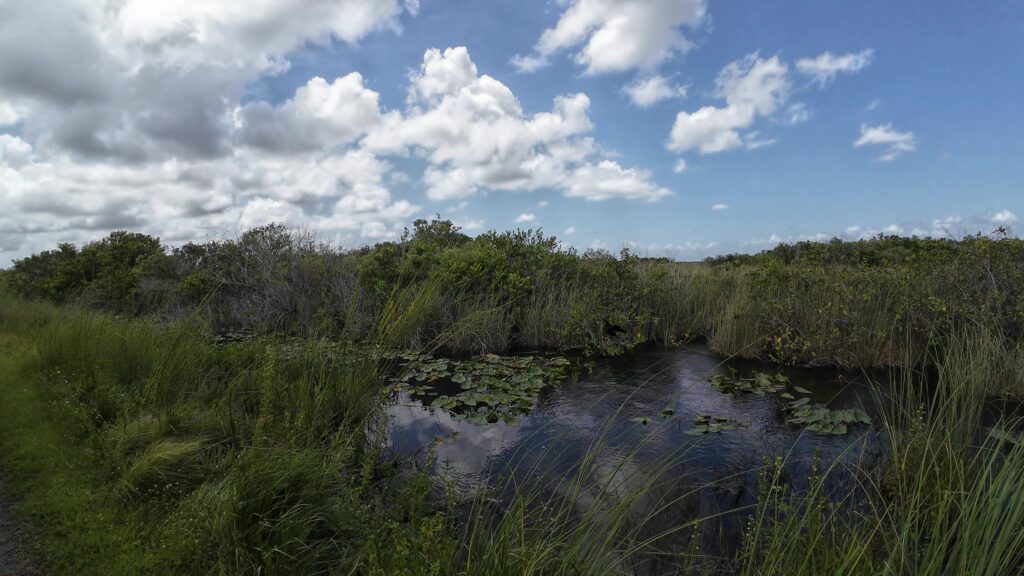
Heading Out on the Tram
The path heading into the Everglades was an asphalt curvy path. In the final ⅓ heading out on the path, the water was so high that it flowed over the trail. This Showcases the region’s unique hydrology. It was sawgrass prairie along with cypress and hard hammock islands of trees and bushes on both sides. The water moves from east to west along the river of grass.
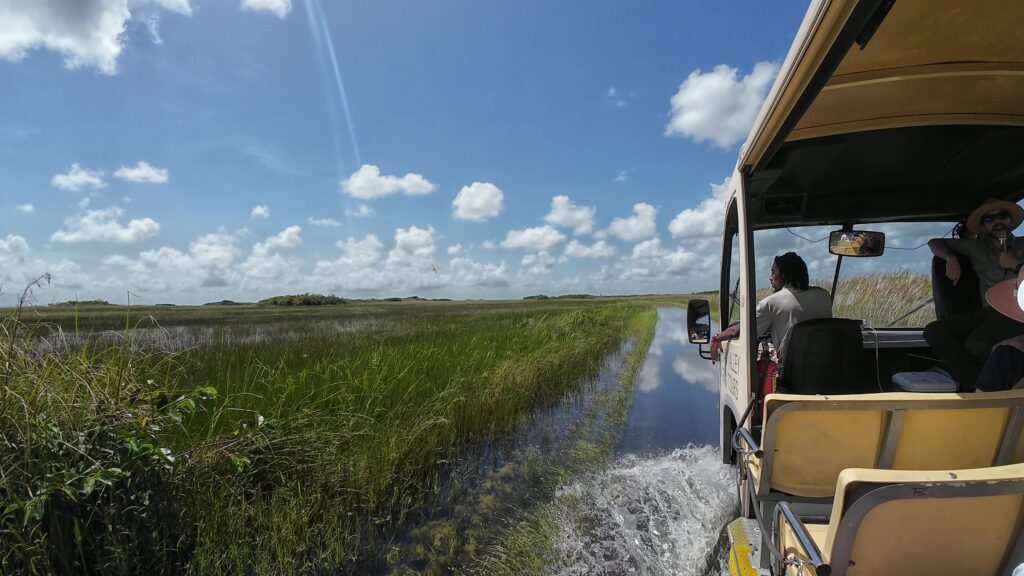
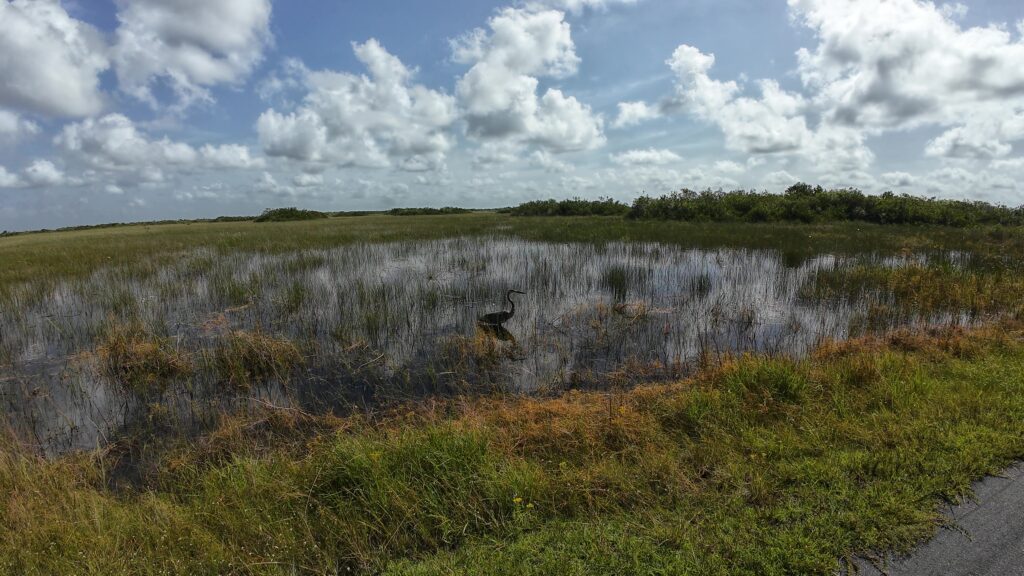
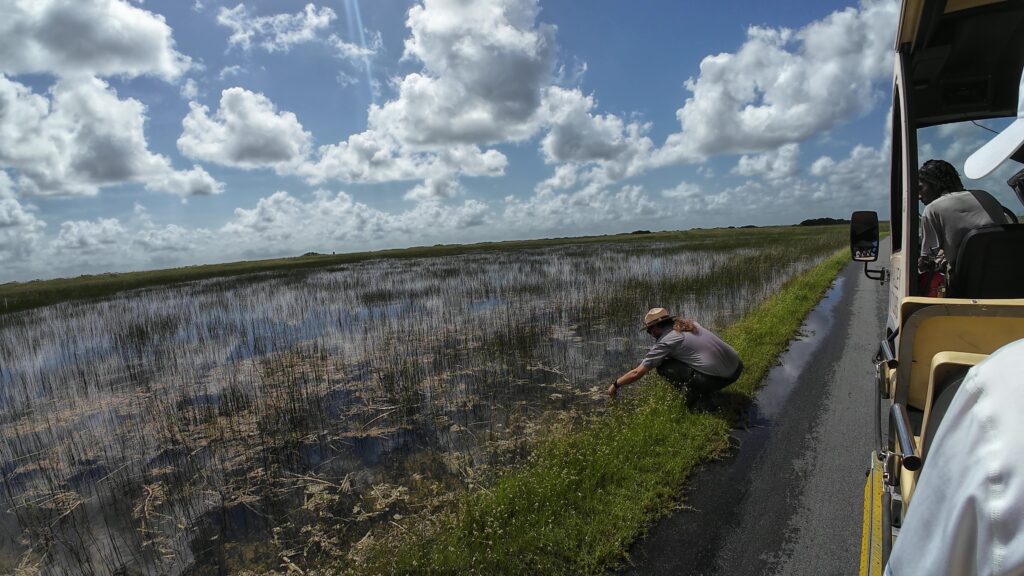
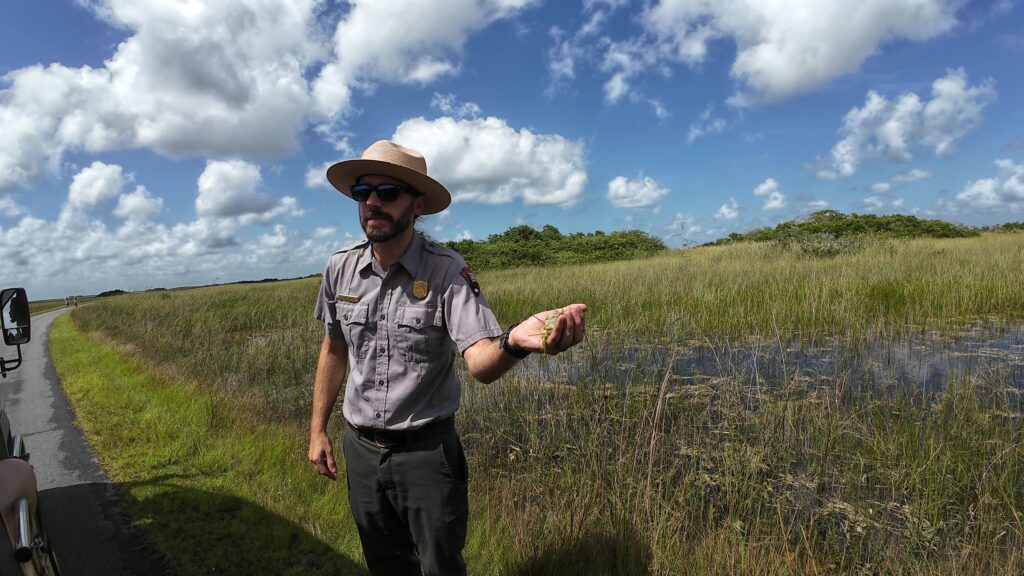
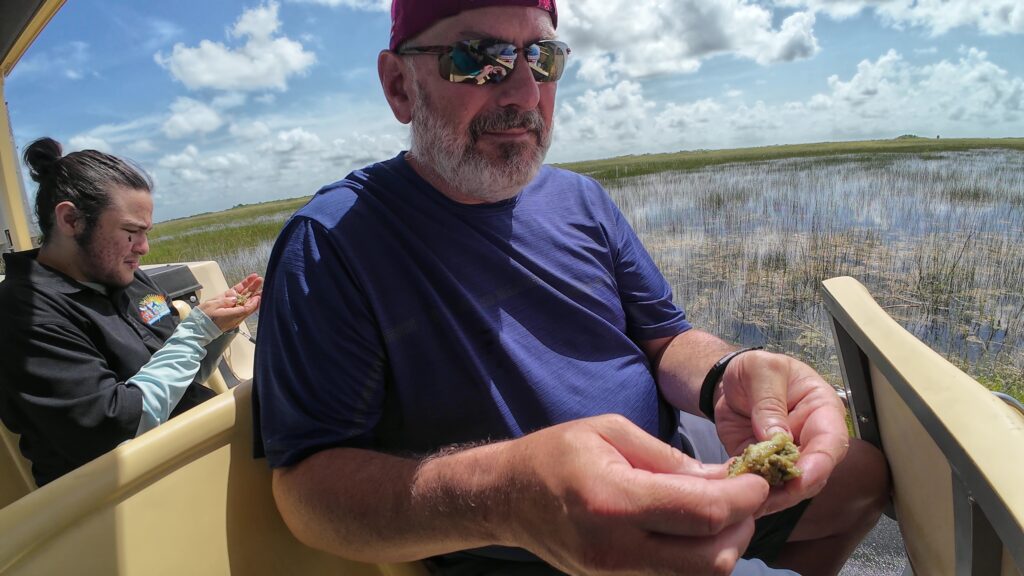
Tram Return Trip
The return trip found us transiting along a straight concrete path originally built by Humble oil back in the early 1940’s while prospecting for oil. The terrain was different along this path. There were wet sawgrass prairies with tree outcroppings, like the first half of the Tram Tour, but the west side was a canal that had been dug out to use in elevating the road when it was built.
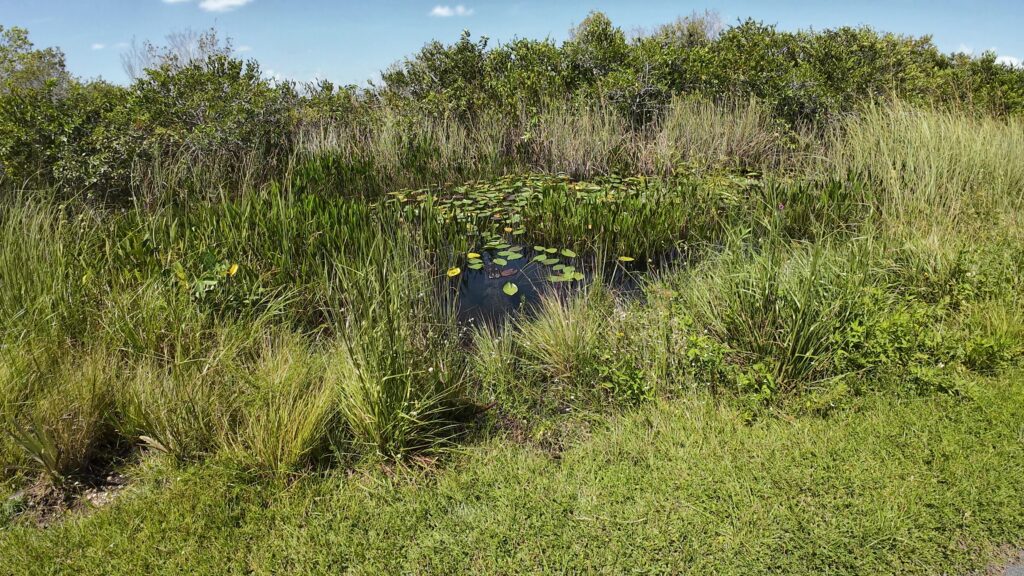
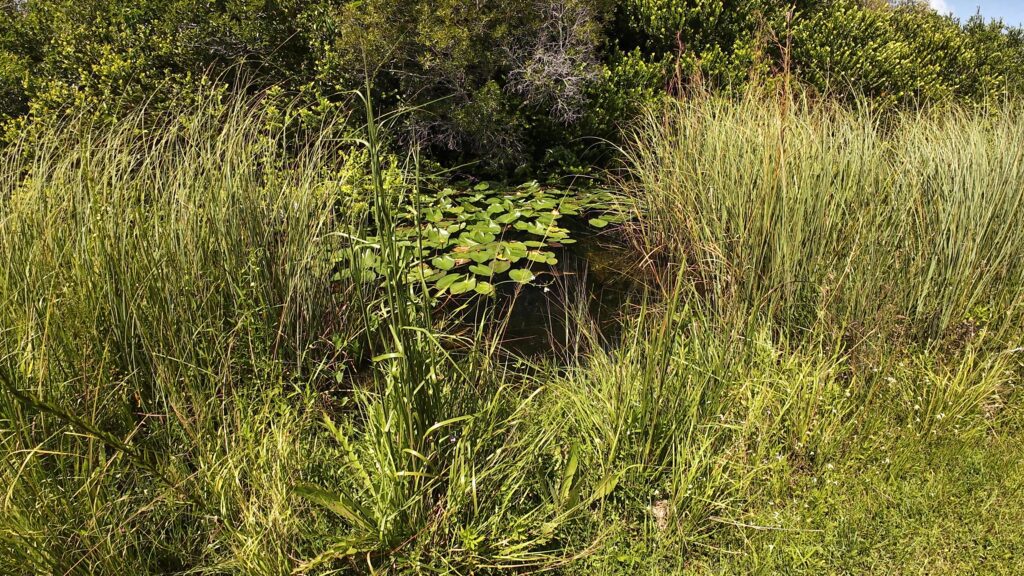
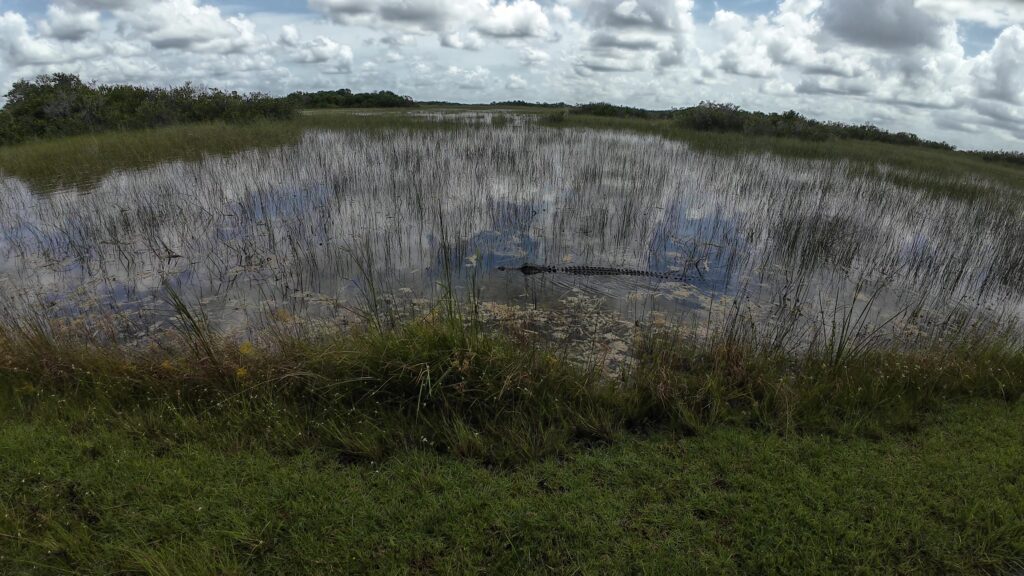
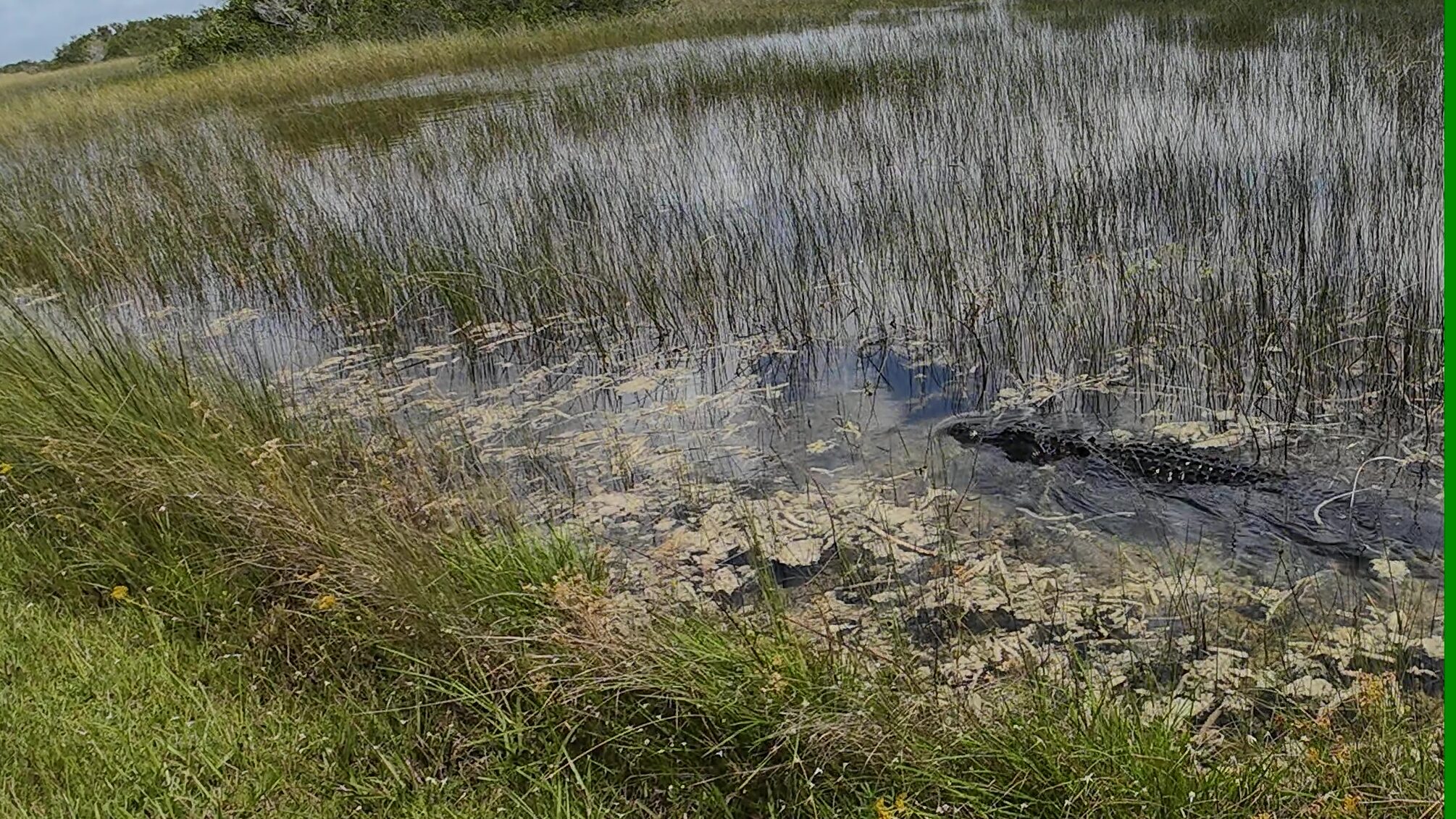
Wildlife Viewing
We observed a variety of wildlife, including adult and baby American alligators, a wide array of bird species including the White and Great Blue Herons, and even a red turtle crossing our path. The ranger provided insightful commentary about the ecosystem and the animals we encountered, enriching our understanding of this remarkable area.
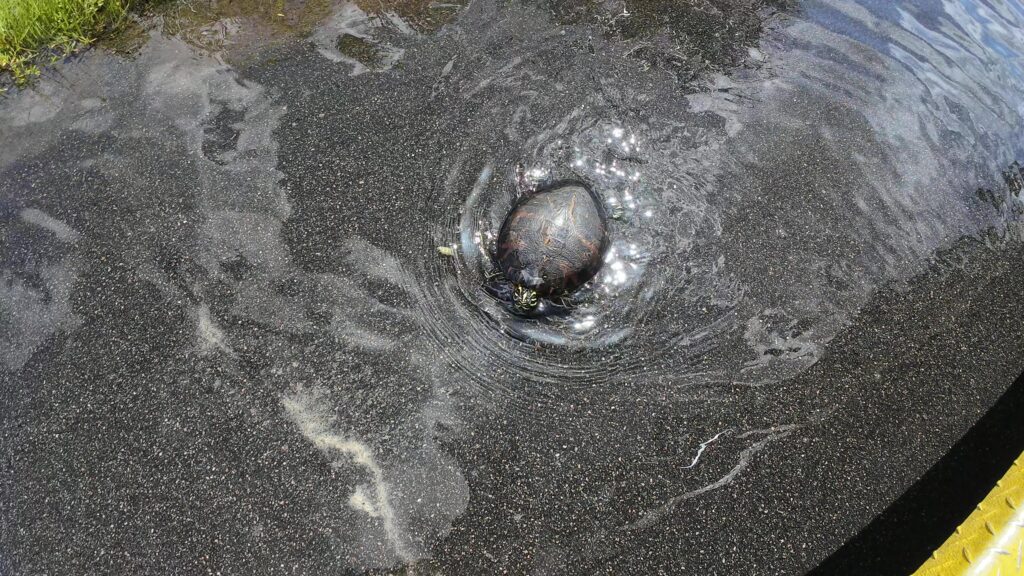
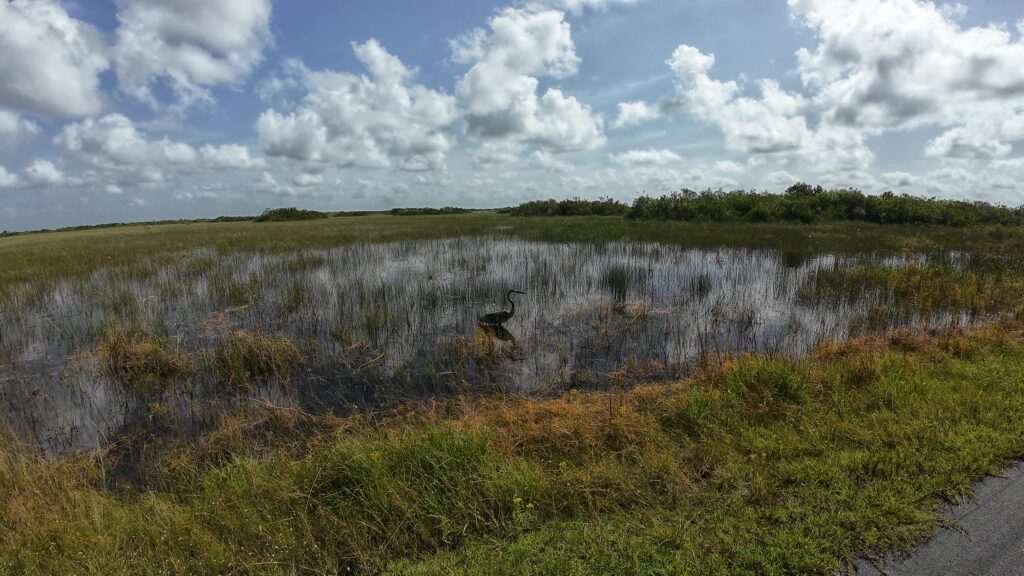
Bicycling the Shark Valley Loop Trail
It should be noted that we also saw some visitors riding bicycles along the same 15-mile loop road. Visitors can bring their own bike or bike rentals are available. Shark Valley Tram Tours rents out bikes for $26 per bike for the day.
The Observation Tower
A highlight of the tram tour was our visit to the Shark Valley Observation Tower at the halfway point. Standing 45 feet high, the tower offered breathtaking panoramic views of the wetlands, stretching as far as the eye can see. Below us lay a stunning pond surrounded by a sawgrass river and small tree outcroppings resembling islands. Our tram driver, a naturalist, shared stories about his great experiences in the Everglades, adding a personal touch to the tour.
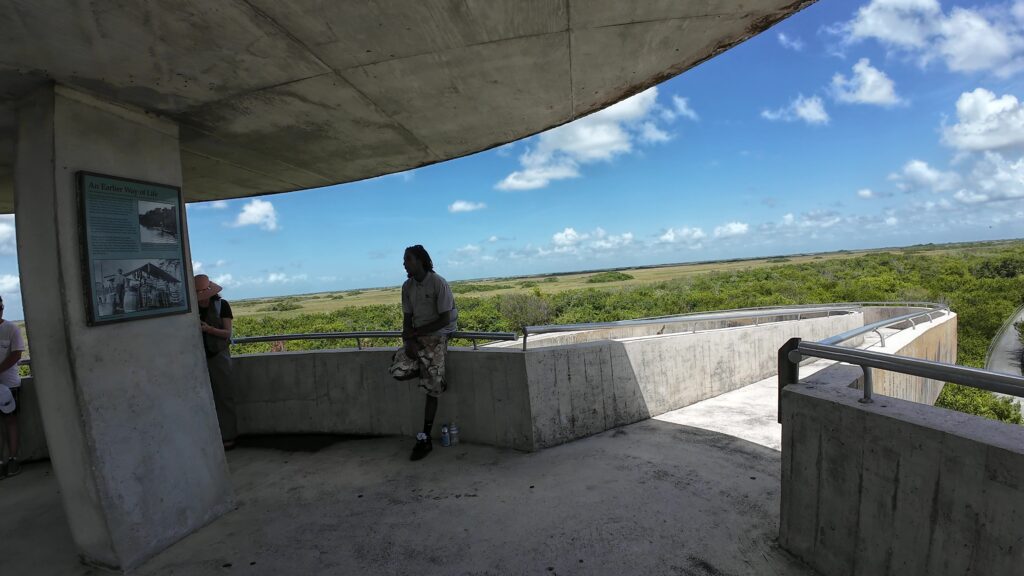
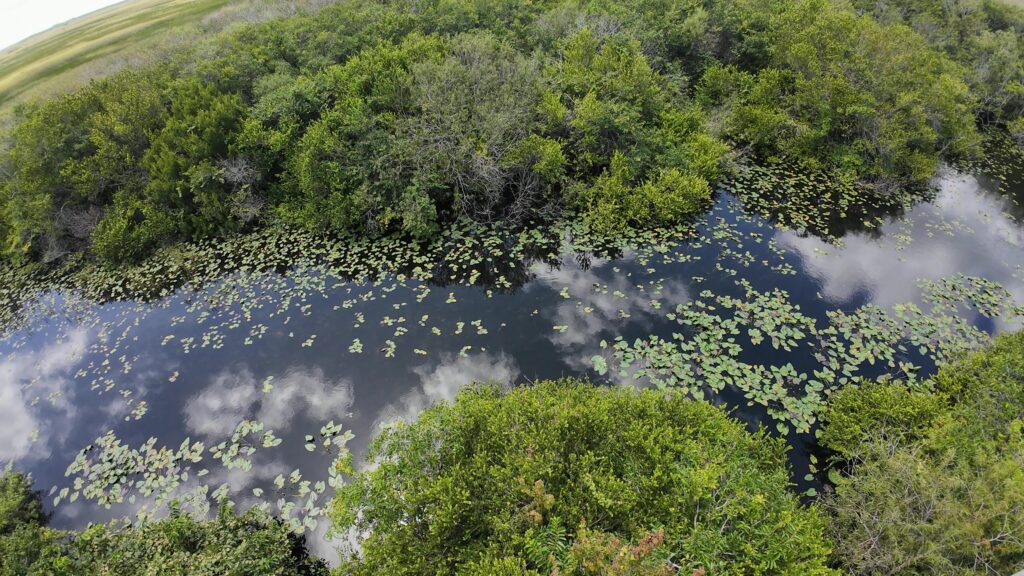
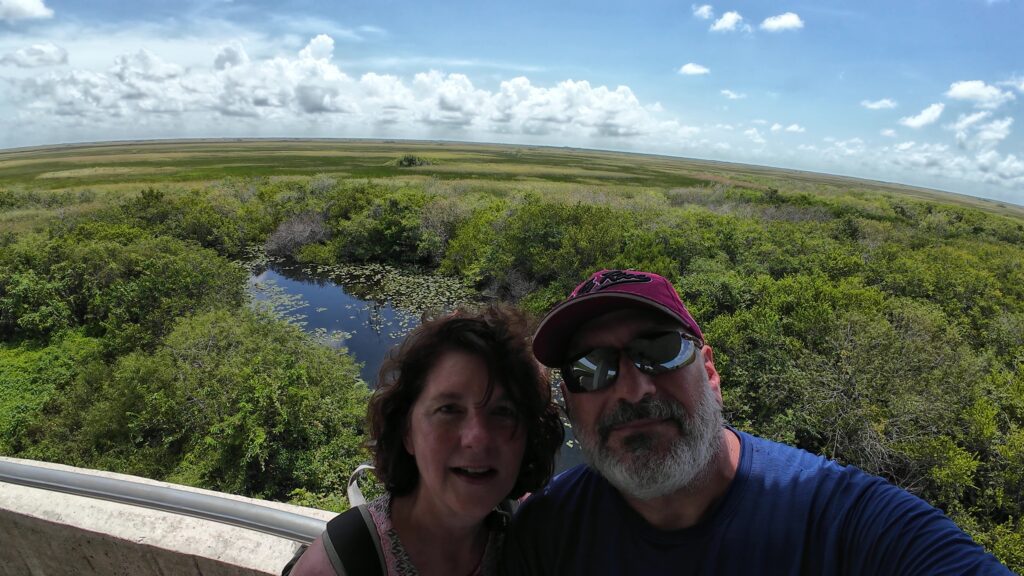
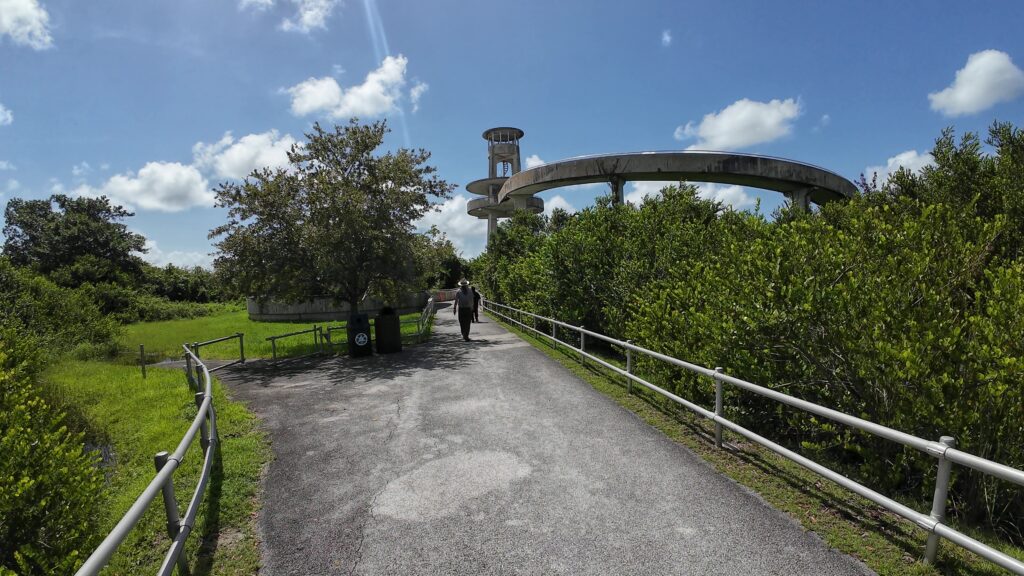
Airboat Adventure at Everglades Safari Park
Following our tram tour, we made our way to Everglades Safari Park for an exhilarating airboat ride. After a quick lunch—simple but satisfying hamburgers and a hot dog—we boarded a smaller airboat for a more intimate experience, and it was worth every penny.
Lunch
We ate lunch at the Everglades Safari Park.


Airboat Ride
The airboat tour was excellent and highly recommended. Make an airboat ride port of your bucket list!!
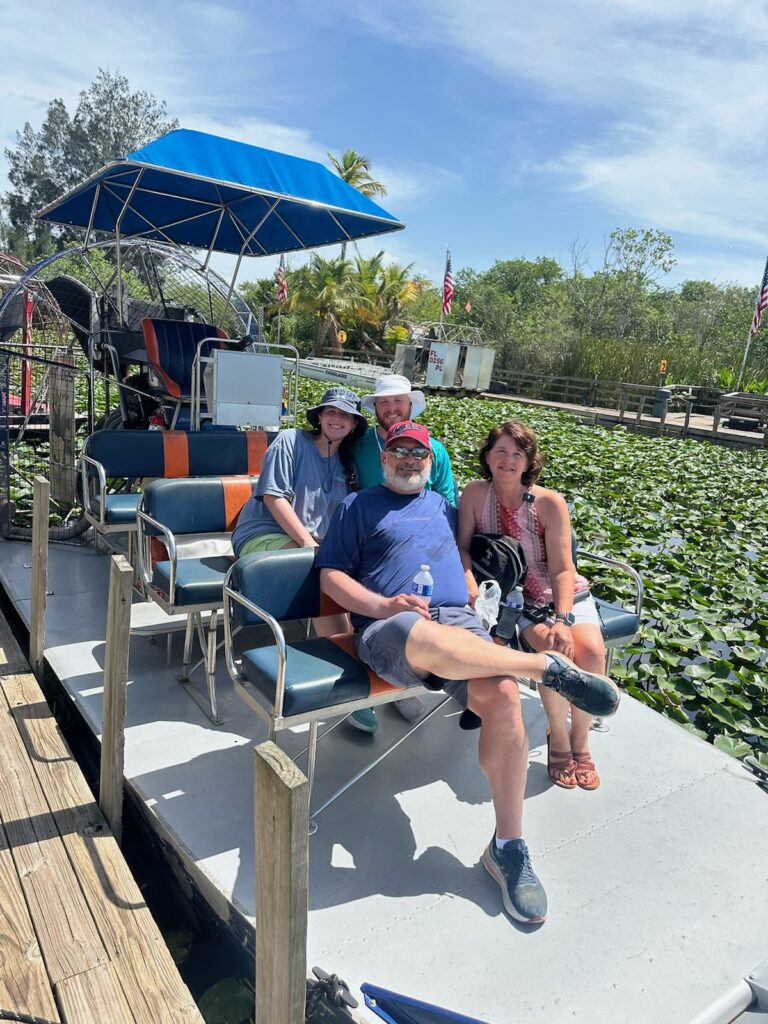
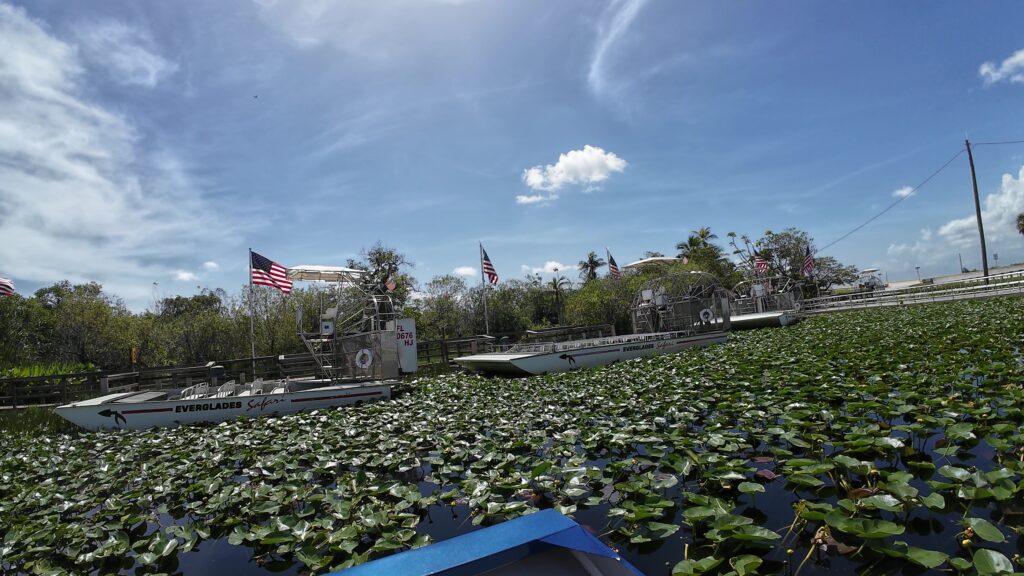
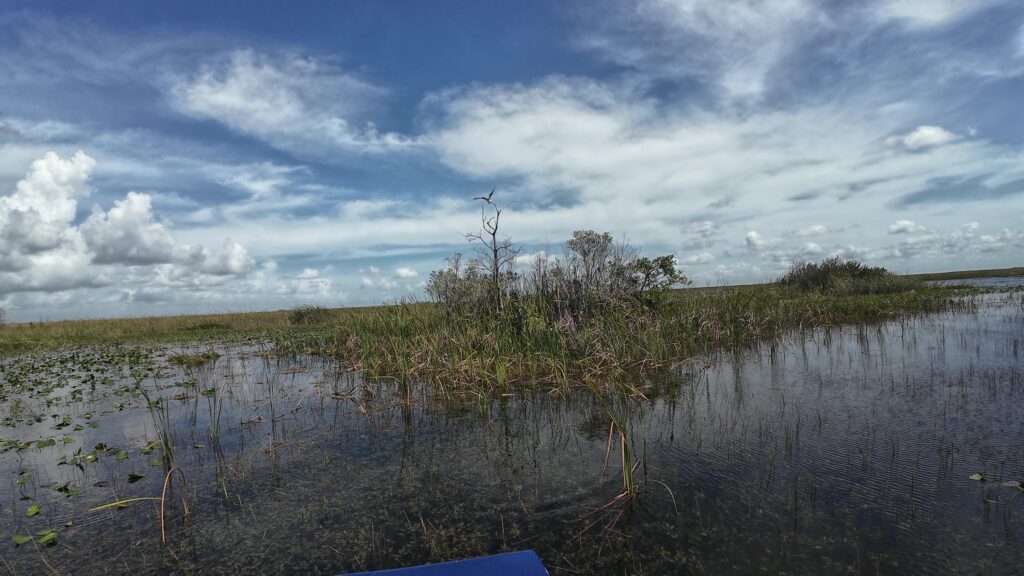
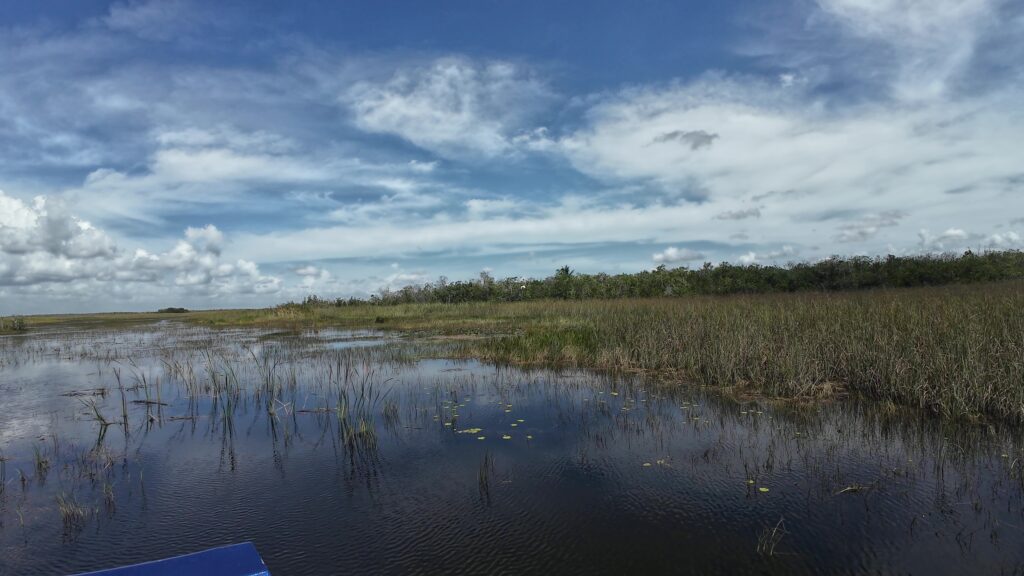
Gliding above the water’s surface on the airboat was an exhilarating experience. We had the unique opportunity to observe an inquisitive adult alligator up close. It was fascinating to see the alligator’s reactions as we approached. The airboat ride exceeded our expectations and is something I highly recommend adding to your bucket list.
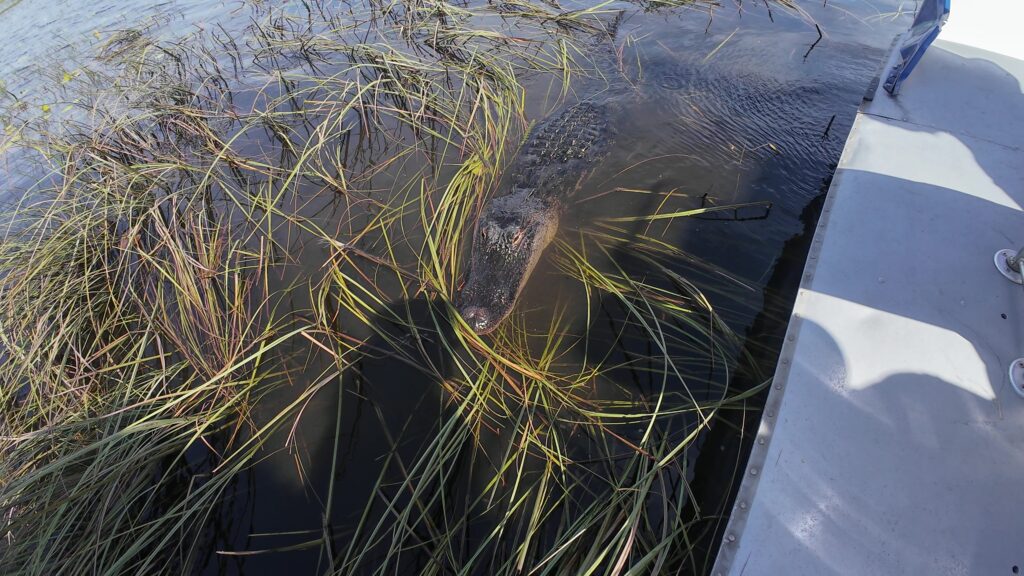
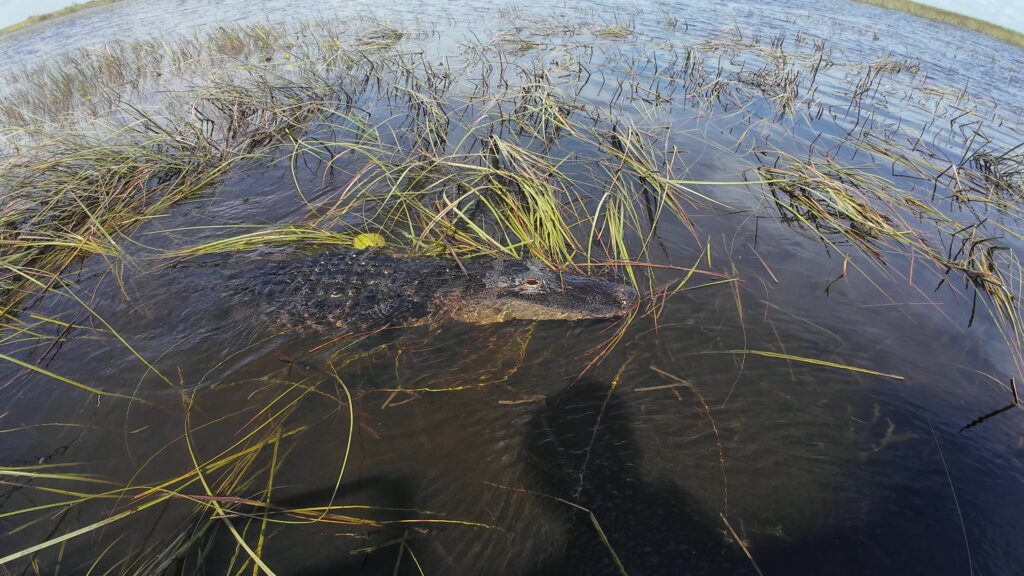
Alligator Exhibit and Nature Walk
Upon returning to the Safari Park, we attended a brief 15-minute exhibit showcasing both American alligators and crocodiles—an intriguing aspect, as the Everglades is the only place in the world where both species coexist. We also enjoyed a nature walk, where we spotted various birds and lizards, making it a pleasant complement to our day.
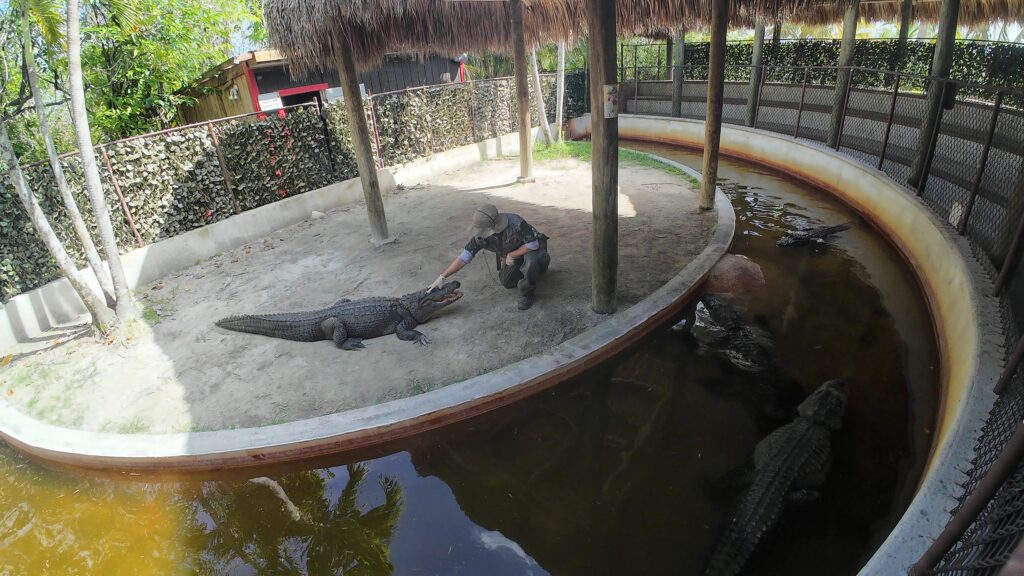
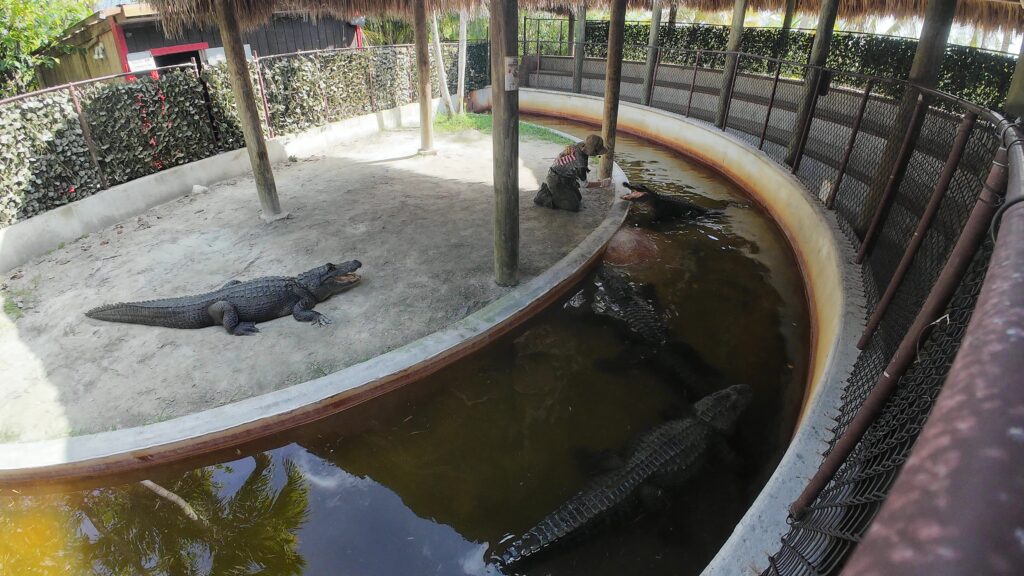
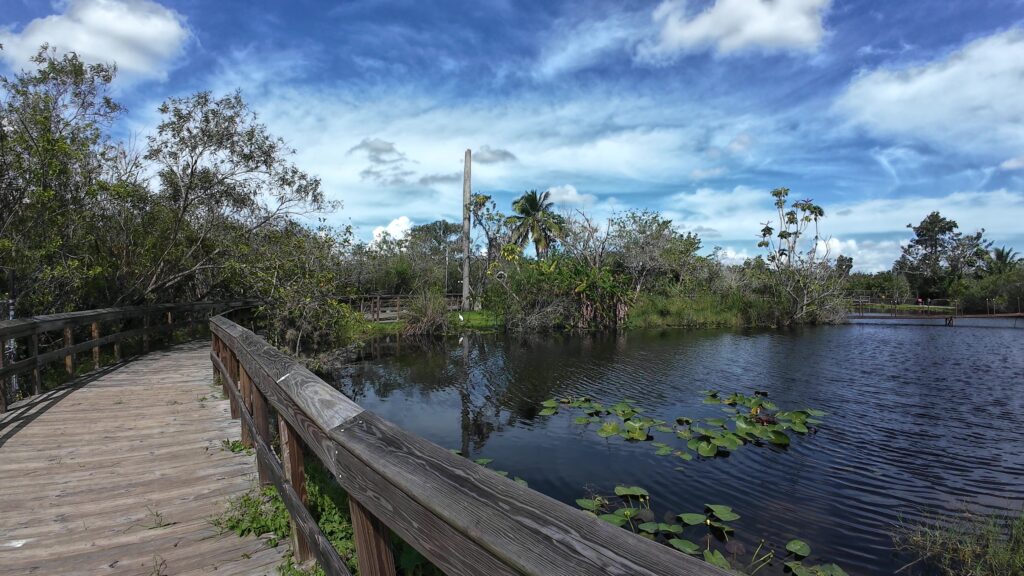
Shark Valley – The Name
You may be curious about the name Shark Valley. While sharks are not found in the shallow waters of the Everglades within Shark Valley, they are not too far away. Two estuaries supplied by The Everglades flow, the Shark River and Little Shark River, offer brackish waters that serve as excellent feeding and nursing habitats for various shark species. These southwestern Florida estuaries play a crucial role in supporting the diverse marine life in the region.
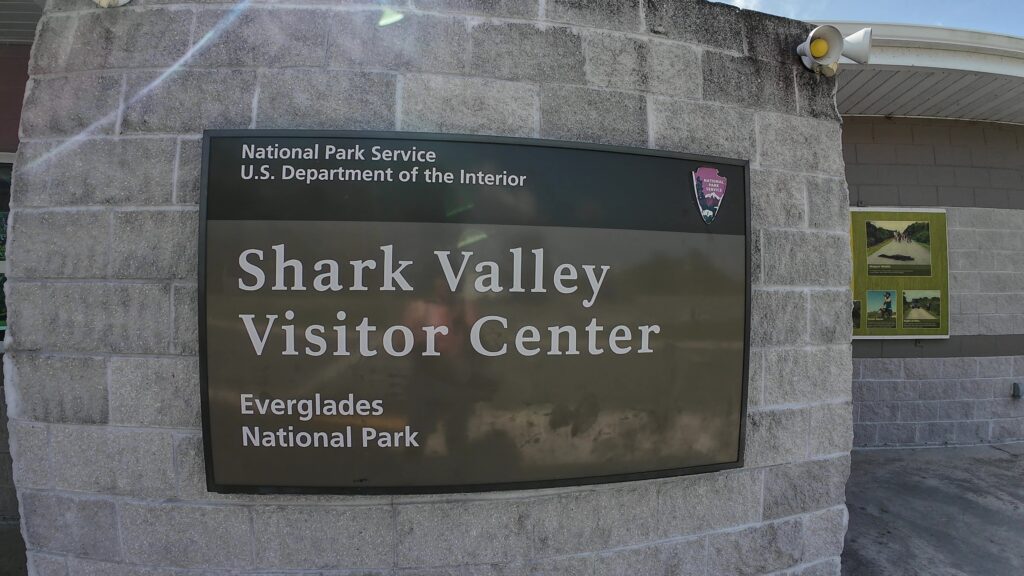
Although there are no towering mountains surrounding Shark Valley, the name is not without merit. The area is technically considered a valley due to the fact that the coastal ridges of South Florida are higher in elevation than the interior of this region. It creates a valley-like effect. The western coastal ridge sits at approximately 14-17 feet above sea level, while the Atlantic ridge is slightly higher at 15-20 feet above sea level. In comparison, the Shark Valley Visitor Center area is situated at a lower elevation of about 7 feet above sea level. This unique topography places Shark Valley in a valley between the two ridges, giving rise to its name.
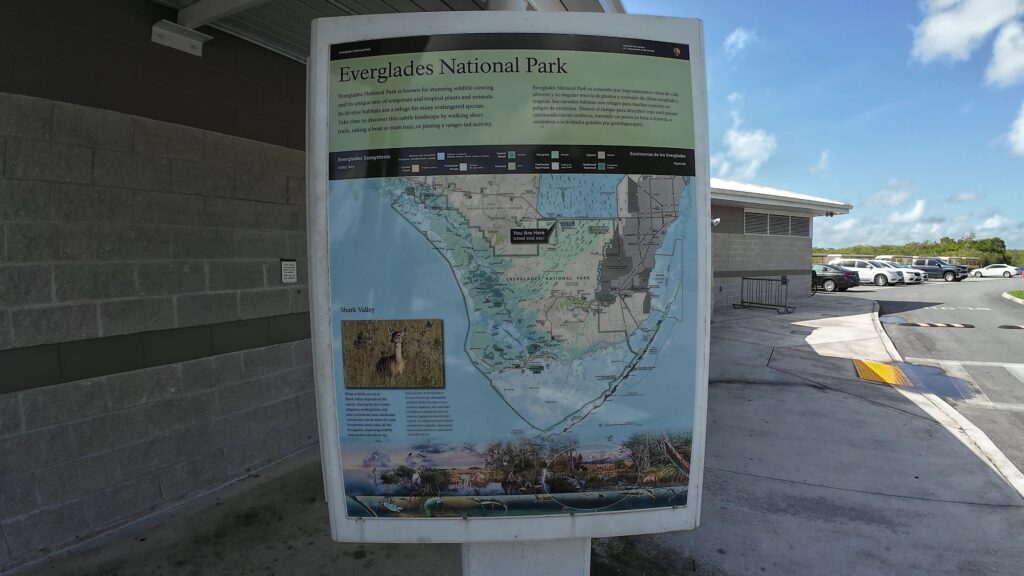
Invasive Species
There are many invasive species in the Everglades Shark Valley area that threaten the ecosystem and native species:
- Burmese pythons: A large, nonvenomous constrictor that threatens native wildlife
- Old World climbing fern: Has taken over 1.7 million acres of the Everglades
- Cuban tree frogs: Prey on native species and their eggs
- Nile monitor: Prey on native species and their eggs
- Mayan cichlid: An introduced fish that outcompetes native species
- Asian swamp eel: An introduced fish that outcompetes native species
These are the top 6 invasive species impacting the plants and animals found in Shark Valley’s river of water, but there are many more. The one most known is Burmese pythons. The likely scenario is that some people kept pythons for pets but then released them into the Everglades as they go too big to deal with. They are killing many small inhabitants of the Everglades including rabbits, opossums, raccoons, rats, etc.
Best Time to Visit the Everglades
Although we visited in early September, when we encountered several alligators and other wildlife, the ideal time to explore the Everglades is during the dry season, in the Winter months, from November to April. This period offers milder weather, lower humidity, and more active wildlife, making spotting alligators and other inhabitants easier while minimizing mosquito encounters. Summer months can be downright hot and humid so be careful if you go during the summer.
Conclusion
Our day in the Florida Everglades was unforgettable and well worth the investment. From the educational tram ride to the breathtaking views from the observation tower, and the exhilarating airboat experience, we left with lasting memories. The Everglades National Park is not only significant for its ecological importance but also stands out as a highlight of our travels through the Florida Keys.
We encourage others to experience the wonders of Shark Valley and the Everglades. The beauty and diversity of this ecosystem can only be truly appreciated in person.
Check out our other Key West and Florida Keys destination posts including the Dry Tortugas National Park west of Key West.
Las Vegas (off the strip) Valley of Fire, Arizona’s Upper Antelope Canyon, New Orleans’s Steamboat Natchez Riverboat and Vegas to Grand Canyon West Rim, and many more. Remember that National Parks are for sure a good time. If you’ve visited Dry Tortuga National Park, we would love to hear about your experiences in the comments below.
As we wrap up our adventure in Key West and the Florida Keys, we invite you to join us on future journeys. For more travel insights, check out our videos covering destinations like the Texas Hill Country, Las Vegas (off the strip) – Valley of Fire, Arizona’s Upper Antelope Canyon, New Orleans’s Steamboat Natchez Riverboat , and Vegas to Grand Canyon West Rim, and many, many more.
If you have visited the Florida Everglades, we would love to hear about your experiences in the comments below. Thank you for following our journey, and we look forward to sharing more travel stories with you soon! We hope to inspire you to plan some of these trips yourself to make memories with your loved ones!

Leave a Reply